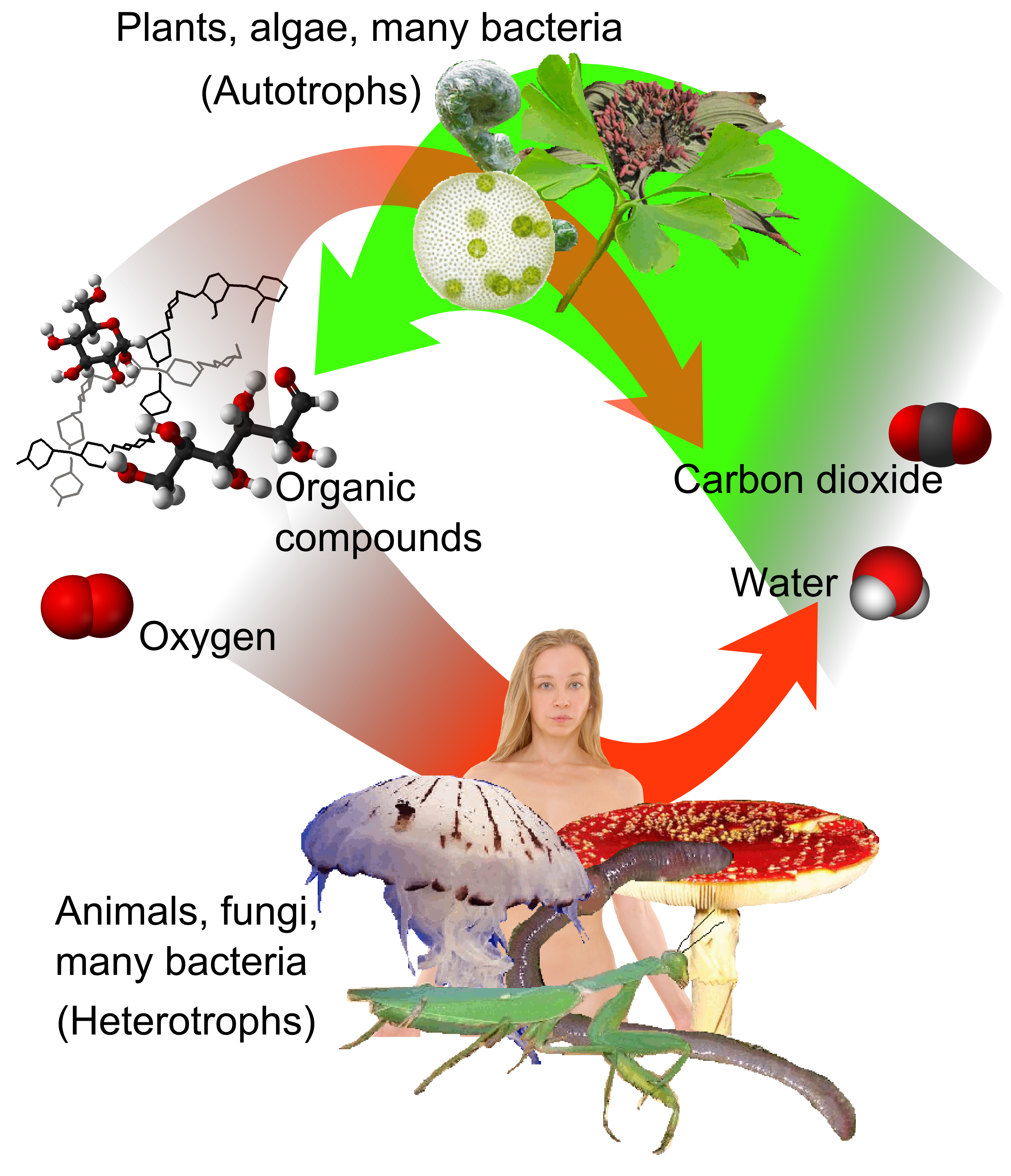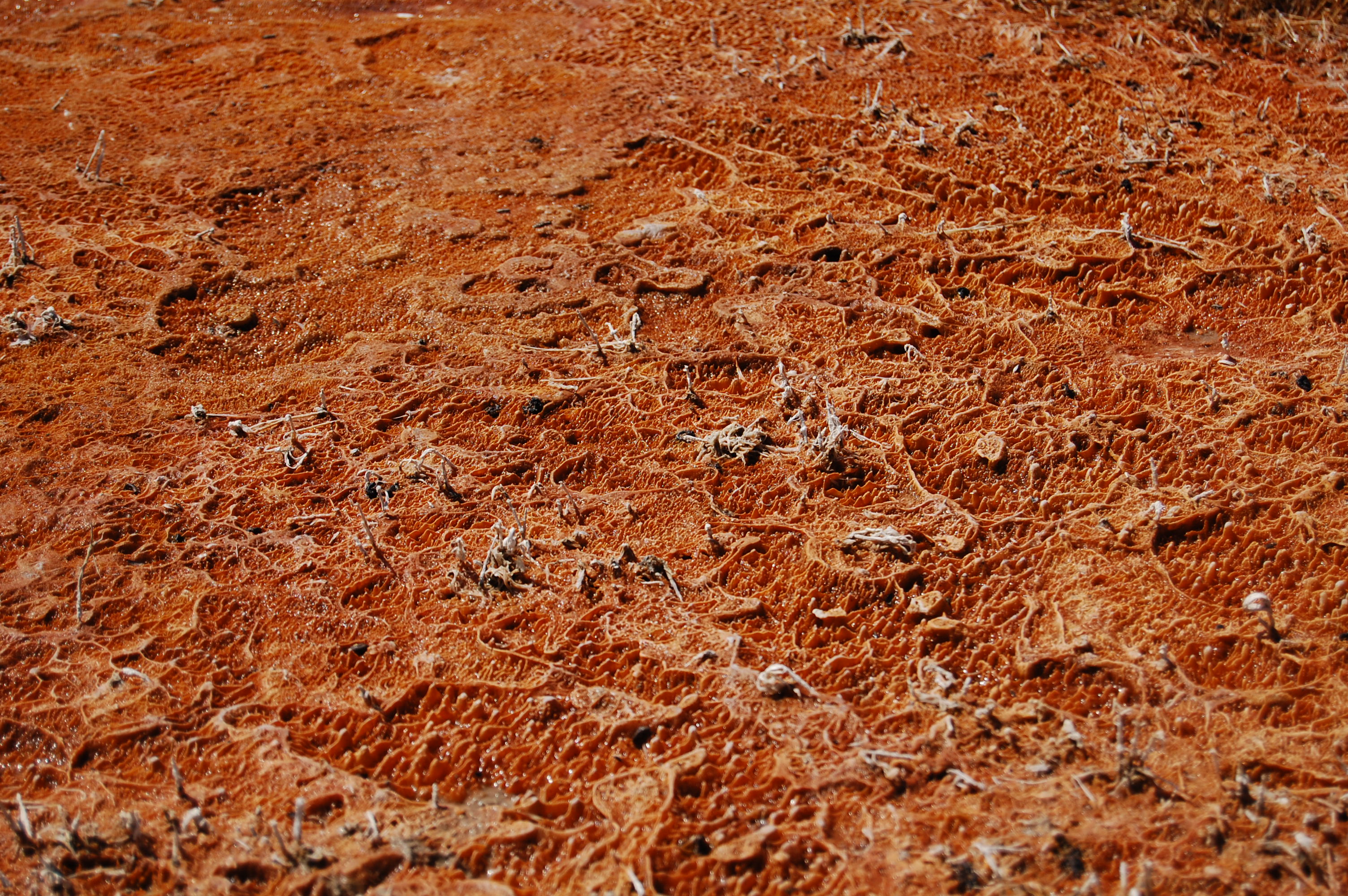|
Piezophile
A piezophile (from Greek "piezo-" for pressure and "-phile" for loving) is an organism with optimal growth under high hydrostatic pressure i.e. an organism that has its maximum rate of growth at a hydrostatic pressure equal to or above 10 MPa (= 99 atm = 1,450 psi), when tested over all permissible temperatures. Originally, the term barophile was used for these organisms, but since the prefix "baro-" stands for weight, the term piezophile was given preference. Like all definitions of extremophiles, the definition of piezophiles is anthropocentric, and humans consider that moderate values for hydrostatic pressure are those around 1 atm (= 0.1 MPa = 14.7 psi). Hyperpiezophiles are organisms that have their maximum growth rate above 50 MPa (= 493 atm = 7,252 psi). Though the high hydrostatic pressure has deleterious effects on organisms growing at atmospheric pressure, these organisms which are solely found at high pressure habitats at deep sea in fact need high pressures for their opt ... [...More Info...] [...Related Items...] OR: [Wikipedia] [Google] [Baidu] |
Extremophile
An extremophile (from Latin ' meaning "extreme" and Greek ' () meaning "love") is an organism that is able to live (or in some cases thrive) in extreme environments, i.e. environments that make survival challenging such as due to extreme temperature, radiation, salinity, or pH level. These organisms are ecologically dominant in the evolutionary history of the planet. Some spores and cocooned bacteria samples have been dormant for more than 40 million years, extremophiles have continued to thrive in the most extreme conditions, making them one of the most abundant lifeforms. Characteristics In the 1980s and 1990s, biologists found that microbial life has great flexibility for surviving in extreme environments—niches that are acidic, extraordinarily hot or within irregular air pressure for example—that would be completely inhospitable to complex organisms. Some scientists even concluded that life may have begun on Earth in hydrothermal vents far under the ocean's su ... [...More Info...] [...Related Items...] OR: [Wikipedia] [Google] [Baidu] |
Organism
In biology, an organism () is any life, living system that functions as an individual entity. All organisms are composed of cells (cell theory). Organisms are classified by taxonomy (biology), taxonomy into groups such as Multicellular organism, multicellular animals, plants, and fungi; or Unicellular organism, unicellular microorganisms such as protists, bacteria, and archaea. All types of organisms are capable of reproduction, Developmental biology, growth and development, homeostasis, maintenance, and some degree of response to Stimulus (physiology), stimuli. Beetles, squids, tetrapods, mushrooms, and vascular plants are examples of multicellular organisms that Cellular differentiation, differentiate specialized tissue (biology), tissues and organ (anatomy), organs during developmental biology, development. A unicellular organism may be either a prokaryote or a eukaryote. Prokaryotes are represented by two separate Three-domain system, domains – bacteria and arc ... [...More Info...] [...Related Items...] OR: [Wikipedia] [Google] [Baidu] |
Heterotroph
A heterotroph (; ) is an organism that cannot produce its own food, instead taking nutrition from other sources of organic carbon, mainly plant or animal matter. In the food chain, heterotrophs are primary, secondary and tertiary consumers, but not producers. Living organisms that are heterotrophic include all animals and fungi, some bacteria and protists, and many parasitic plants. The term heterotroph arose in microbiology in 1946 as part of a classification of microorganisms based on their type of nutrition. The term is now used in many fields, such as ecology in describing the food chain. Heterotrophs may be subdivided according to their energy source. If the heterotroph uses chemical energy, it is a chemoheterotroph (e.g., humans and mushrooms). If it uses light for energy, then it is a photoheterotroph (e.g., green non-sulfur bacteria). Heterotrophs represent one of the two mechanisms of nutrition ( trophic levels), the other being autotrophs (''auto'' = self, ''tr ... [...More Info...] [...Related Items...] OR: [Wikipedia] [Google] [Baidu] |
Cell Membrane
The cell membrane (also known as the plasma membrane (PM) or cytoplasmic membrane, and historically referred to as the plasmalemma) is a biological membrane that separates and protects the interior of all cells from the outside environment (the extracellular space). The cell membrane consists of a lipid bilayer, made up of two layers of phospholipids with cholesterols (a lipid component) interspersed between them, maintaining appropriate membrane fluidity at various temperatures. The membrane also contains membrane proteins, including integral proteins that span the membrane and serve as membrane transporters, and peripheral proteins that loosely attach to the outer (peripheral) side of the cell membrane, acting as enzymes to facilitate interaction with the cell's environment. Glycolipids embedded in the outer lipid layer serve a similar purpose. The cell membrane controls the movement of substances in and out of cells and organelles, being selectively permeable to ion ... [...More Info...] [...Related Items...] OR: [Wikipedia] [Google] [Baidu] |
Bacteria
Bacteria (; singular: bacterium) are ubiquitous, mostly free-living organisms often consisting of one biological cell. They constitute a large domain of prokaryotic microorganisms. Typically a few micrometres in length, bacteria were among the first life forms to appear on Earth, and are present in most of its habitats. Bacteria inhabit soil, water, acidic hot springs, radioactive waste, and the deep biosphere of Earth's crust. Bacteria are vital in many stages of the nutrient cycle by recycling nutrients such as the fixation of nitrogen from the atmosphere. The nutrient cycle includes the decomposition of dead bodies; bacteria are responsible for the putrefaction stage in this process. In the biological communities surrounding hydrothermal vents and cold seeps, extremophile bacteria provide the nutrients needed to sustain life by converting dissolved compounds, such as hydrogen sulphide and methane, to energy. Bacteria also live in symbiotic and parasitic re ... [...More Info...] [...Related Items...] OR: [Wikipedia] [Google] [Baidu] |
Archaea
Archaea ( ; singular archaeon ) is a domain of single-celled organisms. These microorganisms lack cell nuclei and are therefore prokaryotes. Archaea were initially classified as bacteria, receiving the name archaebacteria (in the Archaebacteria kingdom), but this term has fallen out of use. Archaeal cells have unique properties separating them from the other two domains, Bacteria and Eukaryota. Archaea are further divided into multiple recognized phyla. Classification is difficult because most have not been isolated in a laboratory and have been detected only by their gene sequences in environmental samples. Archaea and bacteria are generally similar in size and shape, although a few archaea have very different shapes, such as the flat, square cells of '' Haloquadratum walsbyi''. Despite this morphological similarity to bacteria, archaea possess genes and several metabolic pathways that are more closely related to those of eukaryotes, notably for the enzymes invo ... [...More Info...] [...Related Items...] OR: [Wikipedia] [Google] [Baidu] |
Psychrophile
Psychrophiles or cryophiles (adj. ''psychrophilic'' or ''cryophilic'') are extremophilic organisms that are capable of growth and reproduction in low temperatures, ranging from to . They have an optimal growth temperature at . They are found in places that are permanently cold, such as the polar regions and the deep sea. They can be contrasted with thermophiles, which are organisms that thrive at unusually high temperatures, and mesophiles at intermediate temperatures. Psychrophile is Greek for 'cold-loving', . Many such organisms are bacteria or archaea, but some eukaryotes such as lichens, snow algae, phytoplankton, fungi, and wingless midges, are also classified as psychrophiles. Biology Habitat The cold environments that psychrophiles inhabit are ubiquitous on Earth, as a large fraction of the planetary surface experiences temperatures lower than 10 °C. They are present in permafrost, polar ice, glaciers, snowfields and deep ocean waters. These organisms can a ... [...More Info...] [...Related Items...] OR: [Wikipedia] [Google] [Baidu] |
Thermophile
A thermophile is an organism—a type of extremophile—that thrives at relatively high temperatures, between . Many thermophiles are archaea, though they can be bacteria or fungi. Thermophilic eubacteria are suggested to have been among the earliest bacteria. Thermophiles are found in various geothermally heated regions of the Earth, such as hot springs like those in Yellowstone National Park (see image) and deep sea hydrothermal vents, as well as decaying plant matter, such as peat bogs and compost. Thermophiles can survive at high temperatures, whereas other bacteria or archaea would be damaged and sometimes killed if exposed to the same temperatures. The enzymes in thermophiles function at high temperatures. Some of these enzymes are used in molecular biology, for example the ''Taq'' polymerase used in PCR. "Thermophile" is derived from the el, θερμότητα (''thermotita''), meaning heat, and el, φίλια (''philia''), love. Classification Thermophiles can be c ... [...More Info...] [...Related Items...] OR: [Wikipedia] [Google] [Baidu] |
Reactive Oxygen Species
In chemistry, reactive oxygen species (ROS) are highly reactive chemicals formed from diatomic oxygen (). Examples of ROS include peroxides, superoxide, hydroxyl radical, singlet oxygen, and alpha-oxygen. The reduction of molecular oxygen () produces superoxide (), which is the precursor to most other reactive oxygen species: :O2 + e^- -> \ ^\bullet O2- Dismutation of superoxide produces hydrogen peroxide (): :2 H+ + \ ^\bullet O2^- + \ ^\bullet O2^- -> H2O2 + O2 Hydrogen peroxide in turn may be partially reduced, thus forming hydroxide ions and hydroxyl radicals (), or fully reduced to water: :H2O2 + e^- -> HO^- + \ ^\bullet OH :2 H+ + 2 e- + H2O2 -> 2 H2O In a biological context, ROS are byproducts of the normal metabolism of oxygen. ROS have roles in cell signaling and homeostasis. ROS are intrinsic to cellular functioning, and are present at low and stationary levels in normal cells. In plants, ROS are involved in metabolic processes related to photoprotection a ... [...More Info...] [...Related Items...] OR: [Wikipedia] [Google] [Baidu] |
Cyclopentane
Cyclopentane (also called C pentane) is a highly flammable alicyclic hydrocarbon with chemical formula C5H10 and CAS number 287-92-3, consisting of a ring of five carbon atoms each bonded with two hydrogen atoms above and below the plane. It occurs as a colorless liquid with a petrol-like odor. Its melting point is −94 °C and its boiling point is 49 °C. Cyclopentane is in the class of cycloalkanes, being alkanes that have one or more rings of carbon atoms. It is formed by cracking cyclohexane in the presence of alumina at a high temperature and pressure. It was first prepared in 1893 by the German chemist Johannes Wislicenus. Production, occurrence and use Cycloalkanes are formed by catalytic reforming. For example, when passed over a hot platinum surfact, 2-methylbutane converts into cyclopentane. Cyclopentane has no particular use. No commercial products are made from cyclopentane itself. As a volatile hydrocarbon it is an incidental component of some fuels and bl ... [...More Info...] [...Related Items...] OR: [Wikipedia] [Google] [Baidu] |
Caldarchaeol
Caldarchaeol is a membrane-spanning lipid found in hyperthermophilic archaea. Membranes made up of caldarchaeol are more stable since the hydrophobic chains are linked together, allowing the microorganisms to withstand high temperatures. It is also known as dibiphytanyldiglycerol tetraether. Two glycerol units are linked together by two strains which consist of two phytanes linked together to form a linear chain of 32 carbon atoms (40 carbons including methyl sidechains). The configuration Configuration or configurations may refer to: Computing * Computer configuration or system configuration * Configuration file, a software file used to configure the initial settings for a computer program * Configurator, also known as choice boar ... of the macrocyclic tetraether has been determined by total synthesis of the C40-diol and comparison with a sample of obtained by degradation of natural tetraether. A synthesis of tetraether has also been carried out. Notes {{reflist Addi ... [...More Info...] [...Related Items...] OR: [Wikipedia] [Google] [Baidu] |
.jpg)





